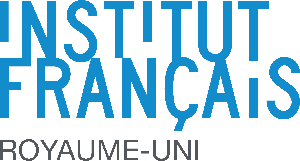The Institut Français du Royaume-Uni: Over 110 Years of History
The Institut français du Royaume-Uni, originally known as the Université des Lettres françaises, opened in 1910, the initiative of a young French woman, Marie d’Orliac, eager to introduce the London public to well-known writers, thinkers and artists from France.
Over the next ten years, the Institut moved several times from its original premises at Marble Arch House (nr. Connaught Place), finally settling at nos 15 – 17 Queensberry Place, where a stunning new art deco building was commissioned from French architect and 1906 Prix de Rome winner Patrice Bonnet (1879-1964). The Institut’s new home was inaugurated by President Albert Lebrun and HRH Princess Mary on 21 March 1939.
Inside, a sweeping staircase leads from the foyer area to the first floor, decorated by the famous Rodin statue L’Âge d’Airain, and a tapestry by Sonia Delaunay. Situated immediately to the left of the staircase on the first floor is the Ciné Lumière, a former theatre room refitted as a cinema in 1997, then renovated in 2009 and reopened by Catherine Deneuve and Arnaud Desplechin. A gallery on the first floor leads into La Médiathèque, which consists in a wood-panelled main reading room, converted from its original use as a ballroom in 1950 by architect Jean-Charles Moreux (1889-1956) and a modern extension. The library underwent further refurbishment in 1995, when architect Jean-François Darin was brought in to fit open-access shelving, a spiral staircase, and a curved glass wall overlooking the first floor gallery. The newly-refurbished building was inaugurated on 15 May 1996 by President Jacques Chirac. Between 2014 and 2017, the listed reading room and particularly its Art Déco features were restored to their initial splendor, while the Kids Library was doubled in size and modernised under the patronage of Sir Quentin Blake, and the adults’ library hub turned in a convenient study space with facilitated access to collections. A more intimate Ciné Lumière II was created from scratch in 2018, to offer alternative content to cinephiles, and the elegant reception rooms were fully revamped on the same occasion. In the foyer, a friendly café welcomes the visitors.
Over the course of its hundred-year history, the Institut has welcomed a variety of distinguished visitors. They include: Jean-Louis Barrault, Madeleine Renaud, Jean Renoir, Abel Gance, Darius Milhaud, André Maurois, Jacques Lacan and Willy Ronis. General de Gaulle, who with the Free French Forces used part of the Institut as a base during WW2, made a return visit in 1960.
Next step, the marble entrance hall will be transformed into a warm and elegant environment, without compromising on the highest sanitary requirements – through a focus on tech facilities and improved accessibility. Marking the dual identity of the Institut, always on striving for modernity but respectful of the unique history it’s been endowed with – the building’s distinctive red-brick exterior is decorated with columns incised with delicate lattice work brickwork and beige ceramic plaques. They depict the graces of Minerva, the goddess of intelligence: (wisdom, knowledge, courage and peace, symbolized by an owl, asp, cockerel and olive branch).


